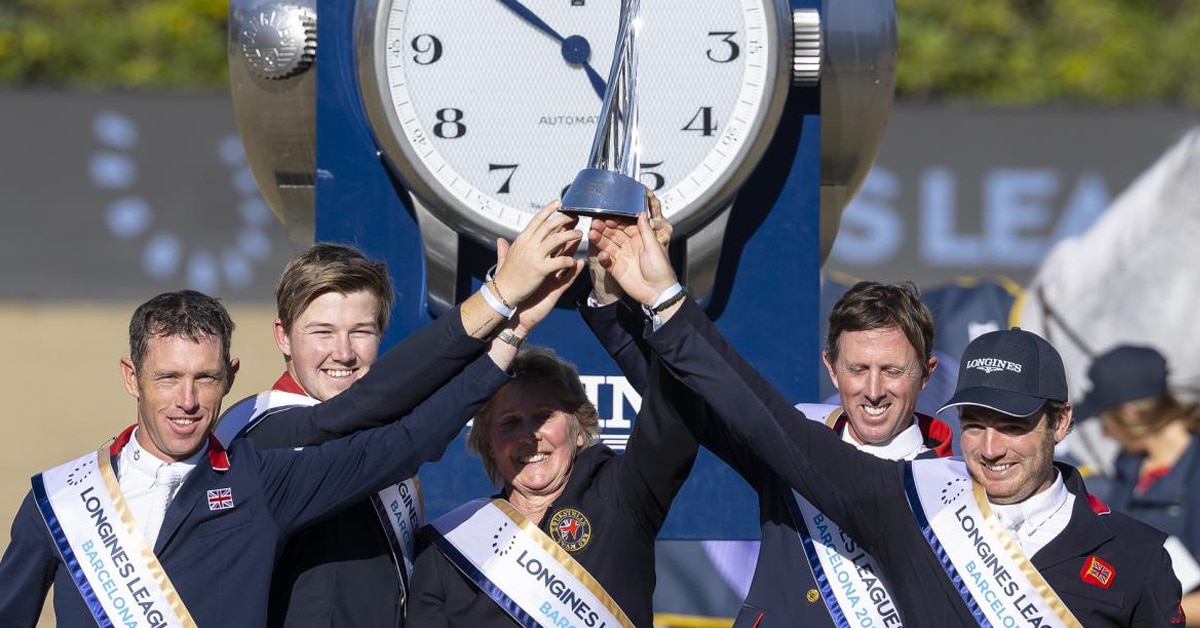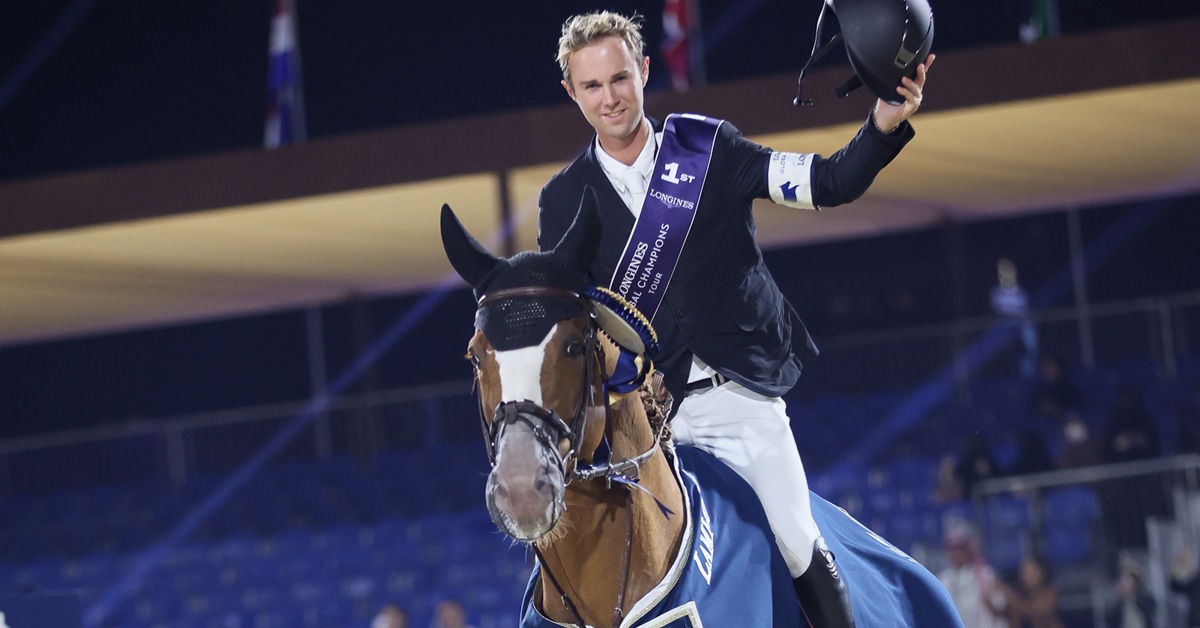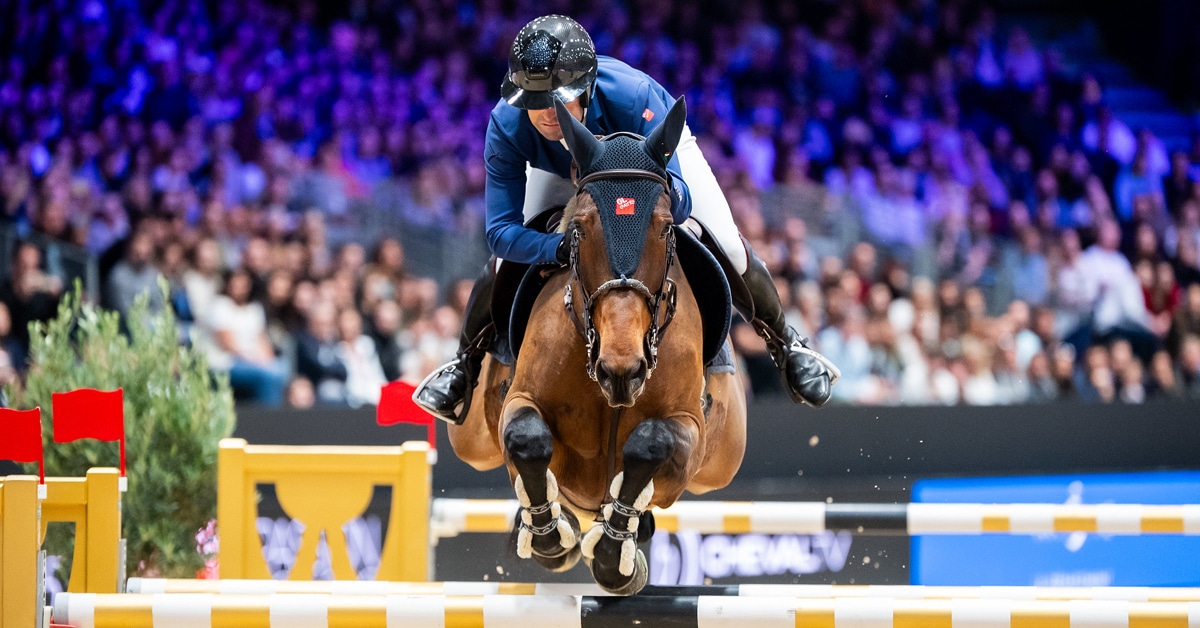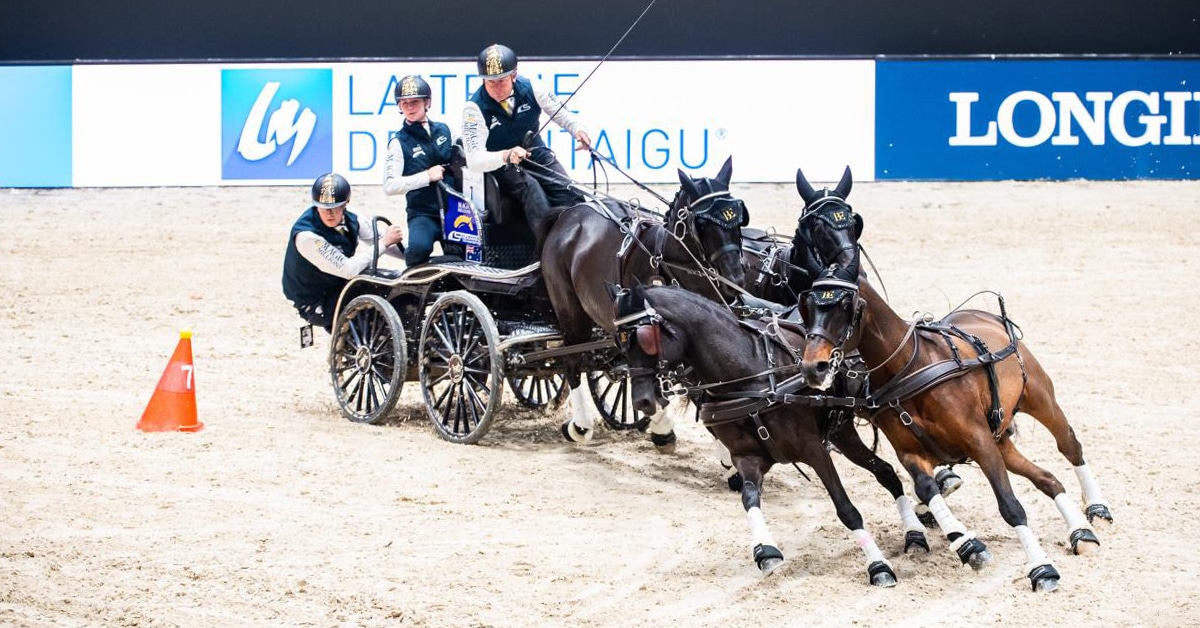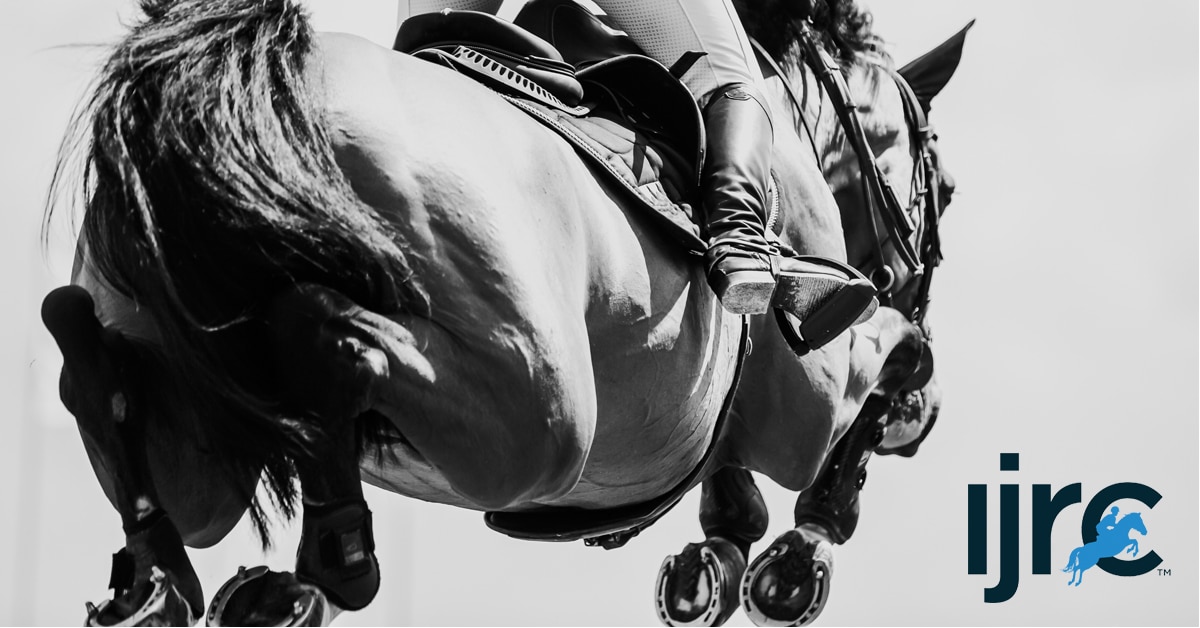The final two days of the Equestrian Canada (EC) Convention, held April 6-8, 2018 in Ottawa, ON, continued to provide the equestrian community with top-class professional development, interactive learning opportunities and engaging social events.
Youth Athlete Panel Offers Glimpse into Canada’s Bright Equestrian Future
The second day of the 2018 EC Convention on April 7 got underway with a two-part session featuring a hot stove discussion between EC Director of Sport, Jon Garner and keynote speaker, Curt Harnett – a four-time Olympian in cycling, two-time Team Canada Chef de Mission and 2018 inductee into the Order of Canada.
Garner and Harnett charismatically set the stage for a panel discussion featuring Canada’s rising equestrian stars through an anecdotal conversation around “Breakthrough: When Preparation Meets Opportunity.” A special feature with video footage of Garner and Harnett’s hot stove discussion will be available soon at www.equestrian.ca.
Following the hot stove, all eyes and ears were on the youth athletes as they spoke to their approaches to training and competition, and the management of their burgeoning careers. The panel was comprised of:
- April Simmonds – Eventing
- Annick Niemueller – Eventing
- Ava MacCoubrey – Dressage
- Jennifer Mattell – Jumping
- Vanessa Creech-Terauds – Dressage
The panelists’ accounts of personal experiences and high performance philosophies provided insight into the opportunities and challenges of today’s youth athletes. Displaying age-defying wisdom, the panelists shared numerous profound observations with the audience, including the following comments:
“I’ve always tried to surround myself with people who demand a high level from those they work with and their horses. You can never perfect the art of riding, but you can surround yourself with people who strive for perfection anyway.” – Annick Niemeuller
“Going into a meeting with a mental performance specialist, I was a little skeptical, but that mental ability gives you the edge over other athletes. Whether it is a small show, the North American Junior and Young Rider Championships (NAJYRC) or the Olympics, you cannot go into that ring putting pressure on yourself because it’ll throw your game. If you think your test looks really bad, then you stop riding to win and you start riding to lose.” – Vanessa Creech-Terauds
“As a rider, I forget that I am an athlete, too. Everything is about the horse; I always want my horses in tip-top shape and I’ve had sound horses throughout my life. Me, on the other hand, I’m not always so sound. I went through a season where I fell off at every single FEI event, I didn’t qualify for NAJYRC, I failed. So, when I went home that summer, I went to a personal trainer. I came out fit the next year, and qualified for NAJYRC on both my horses. When you’re galloping cross-country and your horse is tired, you have to be fitter than they are to support them.” – April Simmonds
Moderator and Sport Law & Strategy Group Partner, Dina Bell-Laroche ended the session by summarizing five major takeaways:
- Our words shape our world.
- Believe in yourself.
- Surround yourself with people who lift you up.
- Fail well.
- Remember your ‘why.’
Visit EC’s Facebook page to watch a full livestream video of the youth panel.
LTED 2.0 Workshop Provides Hands-On Learning Experience Promoting Quality Sport
After the inspiring youth panel, participants were eager to dive into the Discover Long-Term Equestrian Development (LTED) 2.0 Workshop to learn all about this vital resource.
EC’s LTED 2.0 model was launched in 2017 to benefit all equestrian participants, from athletes and parents to coaches and officials to competition organizers and owners. The model was lauded as the best out of nearly 100 FEI countries worldwide during the 2017 FEI General Assembly.
Director of Long-Term Athlete Development at Sport for Life, Carolyn Trono, and EC LTED Working Group Chair, Anne Welch, guided participants through the LTED athlete development matrix and collaborative exercises focused on developing holistic programs and training plans.
“A program has to meet needs,” explained Welch, speaking to the process of creating LTED 2.0. “You don’t just take programs and throw them at the wall to see if they stick. They have to be purposeful, thought out, and meet objectives.”
The discussion centred on proper skill building and touched on key issues, such as aligning terminology and promoting awareness of the LTED model. Another major theme in the workshop was the importance of creating meaningful competitions that function as appropriate challenge zones for athletes.
“Our job in the sport system is to make sure foundational skills are well-developed, and that competition reinforces those skills,” said Welch. “It is so important to make sure competition is not an end to itself, but an opportunity to learn more.”
Trono concluded, “Quality sport is the most important thing. Not everyone is going to be an Olympian, but everyone is going to be participating in the sport, so how can quality equestrian programs contribute to their development? Good programs, people and places need to be there for that quality sport experience and to create a great culture of excellence in all we do.”
To learn more about LTED 2.0, visit www.equestrian.ca/programs-services/lted.
Clive Milkins Details the Pathway to Success from Therapy to Podium
EC Para-Dressage High Performance Technical Leader, Clive Milkins, walked Convention attendees through six phases of para-dressage coaching. He used his own life experience as a personal and powerful case study, tying into his ultimate message: perfect planning prevents poor performance.
“Everything is not about winning, but what does excellence mean?” Milkins asked the audience. “It might be a flying change, coming off the lead rein, or just staying on the horse. As coaches and athletes, we have to ask these questions, because only when we have these goals can we create a plan to perfect them. My coaching philosophy says excellence looks like being the best you can be with what you have on any given day.”
Milkins shared valuable insight into his philosophies and techniques, such as why he abandons stirrups for many of his athletes (stirrups can inhibit a safe fall; make it difficult to remove a child from a horse in an unsafe situation; or throw off the balance of an athlete with a neurological impairment).
By shedding light on para-dressage coaching fundamentals, Milkins illuminated the clear path to high performance growth Canada could achieve through traction and visibility.
Emotion and Inspiration Ran High at EC Awards Reception
Day two of the EC Convention concluded with the 2018 EC Awards Reception – which was an emotional and inspiring one as EC honoured the 2017 national award recipients, comprised of extraordinary equestrians and equines. The presentations included posthumous honours to Susan Grange in recognition of her extraordinary impact on the Canadian equestrian landscape, and Somebeachsomewhere, lauded as the most prolific Standardbred racehorse in recent history.
Watch for full coverage of the 2018 EC Awards Reception in the upcoming Special Convention edition of the EC Insider e-Newsletter (email communications@equestrian.ca to subscribe).
Practical Takeaways at the Equine Gut Health & Colic Prevention Workshop
During a roundtable session on April 8, Equine Guelph Director, Gayle Ecker, taught about the horse’s digestive tract, and how to perform a colic risk assessment and overall health check. Armed with worksheets and a stethoscope, participants learned the basic skills necessary to monitor a horse’s vital signs and overall health.
“Some people have looked at a health check and said it’s way too much work, but once you practice you can do it in less than two minutes,” said Ecker. “Don’t ever let anyone tell you this is too much work. We owe this to our horses. It is our responsibility that we can pick up on abnormalities before they become serious.”
Learn more about Equine Guelph’s horse health initiatives at www.equineguelph.ca.
Chris Sorensen Proves Basics are the True Riding Magic Tricks
EC certified High Performance 1 Coach and Canadian Equestrian Team athlete, Chris Sorensen, closed out the 2018 EC Convention with an auditor-focused live rider demo on April 8. Chris interacted with the auditors while leading three groups of demonstration riders (3’ hunter, 1.15m equitation and 1.30m jumper) through core exercises he incorporates into his equestrian sport program to help riders progressively transition from hunter to equitation to jumper at the high performance level.
“What I think is really important when we’re teaching students is teaching the why,” explained Sorensen, who stressed finding and maintaining the right rhythm from start to finish as the key to optimum distances, and balancing deep in the heels to perfect balance, lighten the seat, and allow horses to use their backs to their full potential. “We don’t want the students to be our robots. We want them to be thinkers and understand the theory.”
Sorensen set a course that may have appeared basic, yet could be utilized to hone core skills, and adapted to suit any level of athlete. The simple yet effective exercises were designed to immediately expose areas for improvement, and resulted in many proven examples of how awareness and small tweaks can lead to instantly visible results.
“I think that a kid wanting to be perfectionist is common in our sport,” said Sorensen. “Perfectionism can get away from us, but can be a tool if used in the right way. I want the perfectionism on the process and not the outcome. You can make a change or an effort on every stride to control the here and now.”
Sorensen concluded the day with an impactful anecdote, stating, “One of the most amazing things that you learn as you train with top people around the world is that almost all of them practice basics every day. We all think that these famous riders are going to teach us magical tricks that are eluding us, but the fact of the matter is that riding is a very difficult sport, but it’s not that complicated. It requires a lot of discipline and control. What you see these riders do is very basic, but exactly what they need to do in terms of control in the ring.”
For a sample of footage from the Live Rider Demo, visit EC’s Facebook page – and keep an eye on the EC Insider e-Newsletter for additional coverage. Subscribe today by e-mailing communications@equestrian.ca.
More News


